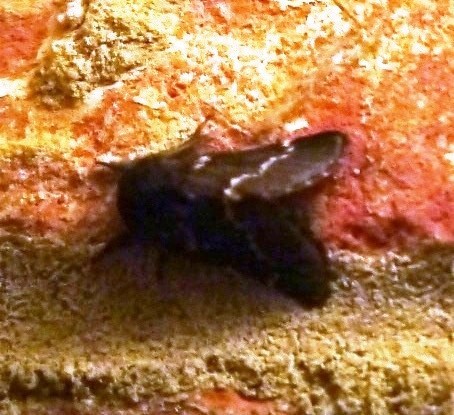
The total monthly rainfall was 49.5 mm with a maximum daily rainfall: 14 mm (11th). Maximum temperature was 15°C on the 1st and 3rd, while the coldest day was 5°C on the 30th. We recorded fog on the 2nd and 3rd, and frosts on the mornings of the 6th, 17th, 18th, 19th, 25th, 26th and 30th; during the afternoon of the 30th there were some snow flurries which failed to settle.
https://www.kentfieldclub.org.uk/news/little-barton-farm-wildlife-notes/november-2017#sigProId55a7126021
There were only a few first-sightings during the month, including an exceptionally rare brief sighting of a stoat’s head poking out of a hole in a railway-sleeper bridge to our wood on the 3rd, and a few fairy ring champignon fungi on the woodland floor on the 15th. Apart from that there were only three late-season species of moth, a mottled umber on a lighted porch window (11th), a December moth on a wall below the outside light (20th), and a winter moth on the porch door (25th).
Our wildflower species continued to decline, with the last dark mullein on the 3rd and rough hawkbit on the 4th. We then lost the knapweed and herb robert on the 12th, and nipplewort on the 19th. This leaves us with the occasional red deadnettle, dandelion, common daisy, sow thistle, tall melilot and oxeye daisy going into December.
With the month providing somewhat inhospitable weather for dragonflies and butterflies, we only saw the migrant hawker dragonfly until the 2nd, and common darter until the 10th. Also on the 10th we had our last sighting of the red admiral butterfly.
Despite this being a season of bird migration, we have not added to the previous 47 species of wild birds recorded so far this year because they were here in the spring. On the 22nd we were visited by 17 canada geese, which now come and go as they please. There were also 22 mallard ducks, but this number usually swells when the ponds freeze over. In the last week we noticed a huge increase in birds visiting our feeders, with blue and great tits in perpetual motion on the peanuts and fat-balls, and even the resident jackdaws behaving like tits on the peanut feeder. Every few minutes a nuthatch landed upside down and disappeared with a whole peanut in its beak, while goldfinches swapped positions with blue tits on the niger seed. On the ground, chaffinches picked up the spilt niger seed, while dunnocks, like little mice, furtively mopped up the crumbs from the bird seed
The most visible signs of autumn into winter are the trees and hedges. It must be said that they vary in their progress not only between different species but also within the same species. Thus, at the time of writing at the end of November, there are some oaks recorded as “bare”, while a small number of others still retain a fair proportion of their leaves. Our observations show that some oak trees had a full brown tint to their leaves on the 4th, hazel had turned yellow by the 9th, and some hawthorn, beech and silver birch had reached their full respective brown, copper, and yellow by the 11th. Finally, some field maple were bare on the 2nd November, and some hornbeam and wild cherry on the 5th. This was followed by the horse chestnut (14th), hawthorn (17th), oak (21st), hazel (22nd), silver birch (23rd), and beech (30th).

